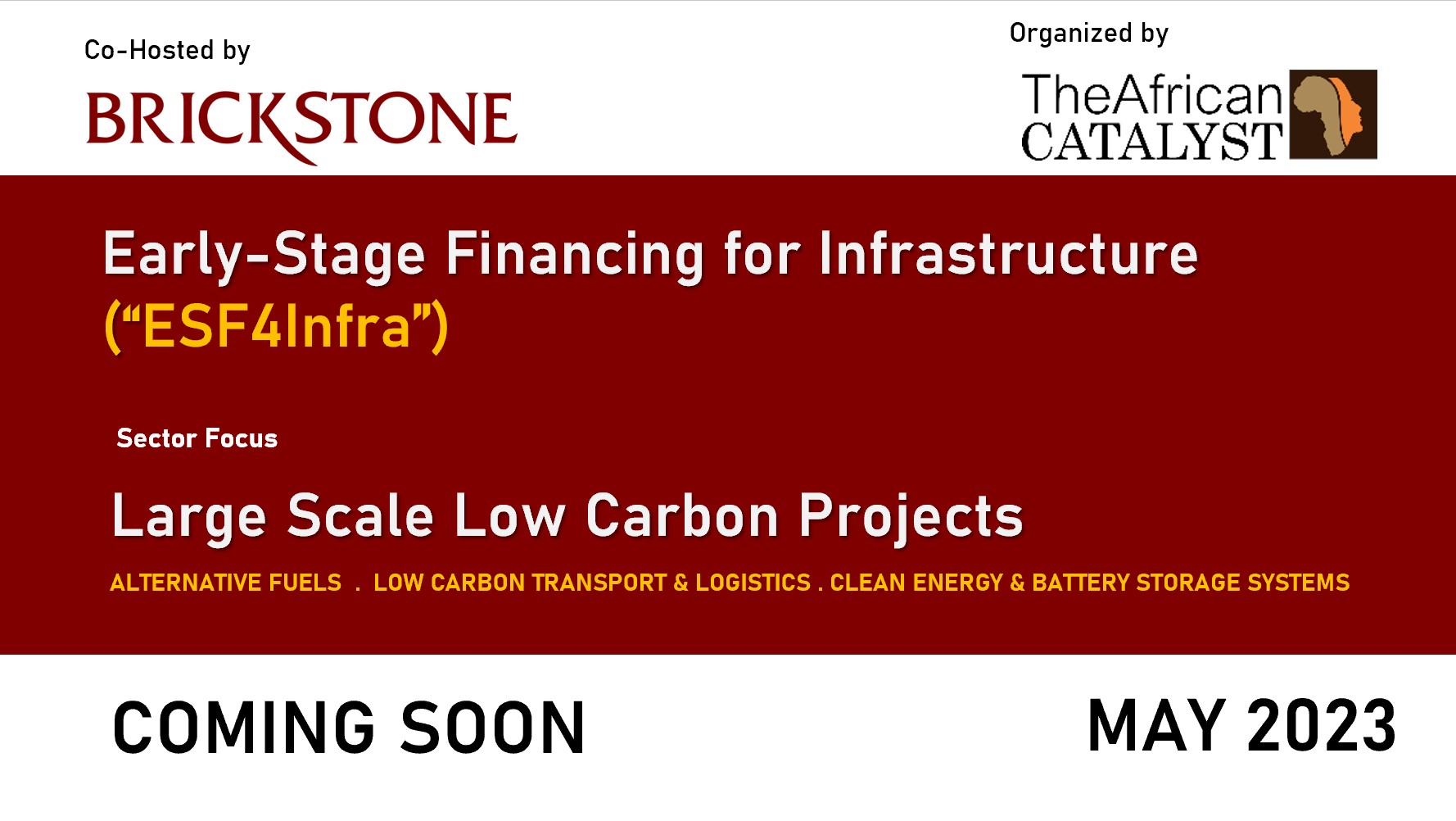According to OECD, blended finance is the strategic use of development finance for the mobilisation of additional finance towards sustainable development in developing countries. To help bridge Africa’s infrastructure shortfall, analysts are turning to this finance model to direct more commercial finance toward impactful investments in meeting estimated infrastructure finance needs.
This article by The African Catalyst reviews some institutional reports and publications on the role of blended finance in Africa’s infrastructure investment, highlighting key facts and takeaways.
Blended Finance in Africa Infrastructure
Africa urgently needs to increase investment to close its infrastructure deficit at scale and speed, to reach its development objectives - as stipulated in the UN 2030 Agenda for Sustainable Development, and Agenda 2063. According to the African Development Bank, closing this gap means investing up to US$170 billion per year in sectors such as energy, transport, water, sanitation, urban, and ecosystems. These sectors are sensitive to the adverse impacts of climate change, including more frequent and intense floods, droughts, and heat waves.

To meet this massive financial demand, catalytic instruments like blended finance are critical for scaling up investment.
Public funds will not be sufficient in these challenging times. We have to look for additional capital from development partners, the private sector and institutional investors.
The following are key facts and takeaways:
- According to the AfDB, infrastructure development is a key driver for progress across the African continent and a critical enabler for productivity and sustainable economic growth. It contributes significantly to human development, poverty reduction, and the attainment of the Millennium Development Goals (MDGs). Despite these paramount needs for adequate infrastructure, Africa faces serious infrastructure gaps, with over US$170 billion annual finance to close the gaps. For example, about 570 million people in Sub-Saharan Africa lack access to electricity.
- However, innovative models for attracting private capital to LDCs are emerging and beginning to have success. Blended finance—investment models that mix development, donor, and private capital into the same investments—is helping to mitigate private investors’ concerns over downside risk and the lack of suitable investment opportunities. These models are enabling investors to play a key role in LDCs, including in promising emerging industries such as clean energy, agriculture, sustainable tourism, and digital infrastructure. Scaling blended finance investments will be crucial to facilitating LDCs’ post-pandemic recovery and charting a path toward long-term sustainable development.
- According to Business Live, blended finance is an instrument aimed at supporting high-income projects that would otherwise not attract funding on strictly commercial grounds. It is the strategic use of development finance and other funds to mobilise capital flows to emerging markets, combining official development assistance with other private and public resources. But analysts say the blended finance model, which allows for institutional investors and the private sector to back projects in the early stage of development, will be tested in the global economic slowdown and that African governments need to create systems that allow capital to flow efficiently.
- Despite its potential, blended finance, according to Global Infrastructure Hub, remains volatile and has not yet reached its full potential. To attract consistently large volumes of commercial financing, governments, development partners and development practitioners must work together to make private capital mobilisation a core part of their strategies. Each stakeholder must prioritise scalable and replicable approaches.
- According to Infrastructure Investor, alongside the optimisation of blended finance components, other critical pieces in the blended finance ecosystem must also align for private capital to flow to infrastructure projects at ground level. Three actions are particularly important. These include tracking sustainable deaflow, adopting a regulatory framework suited to infrastructure performance and selecting project delivery models that mobilise private capital.
Read more here.


